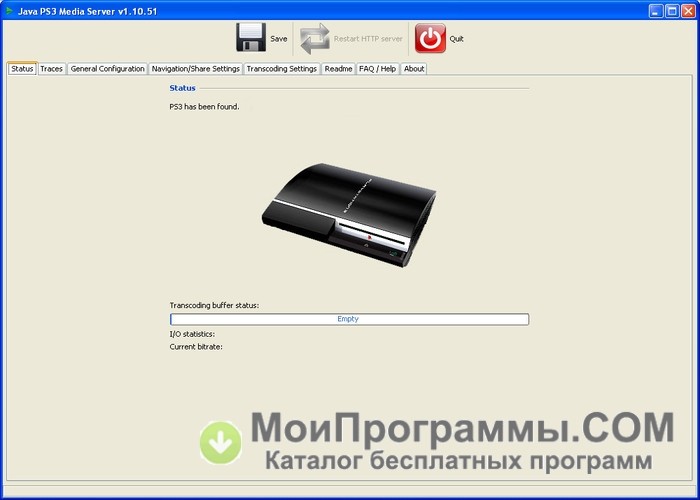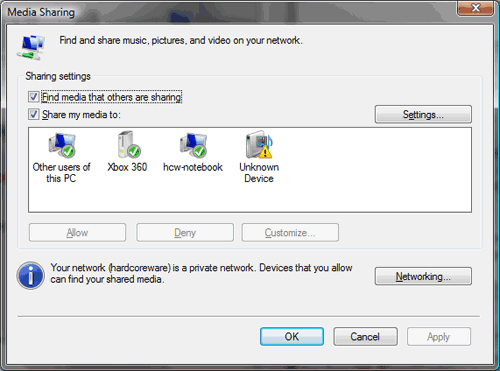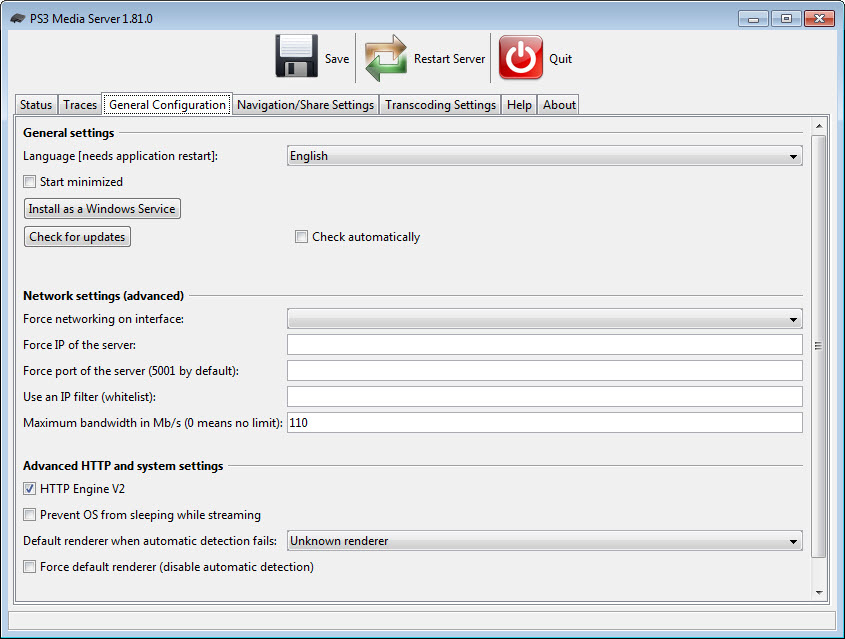

This is particularly useful on mobile data connections which may be metered and/or have limited bandwidth. This reduces network usage when playing tracks that have been previously played.

There are separate settings for Audio, Video, Images, and for each connection type.Īndroid BubbleUPnP can optionally cache to local storage music accessed through BubbleUPnP Server.
#SET UP PS3 MEDIA SERVER ANDROID#
In Android BubbleUPnP, you can configure how BubbleUPnP Server should perform the transcoding in Settings > Networks and settings. Separate transcode settings are also available for downloaded files.įor transcoding to work, BubbleUPnP Server must report that audio and/or video transcoding are supported in its Status tab.

No transcoding is ever performed if streaming to an external renderer, as it may have a faster connection to BubbleUPnP Server than your Android device. PS3 -> Internet -> BubbleUPnP Server -> Your Media Server.Īudio, video and image transcoding settingsīubbleUPnP Server can optionnaly transcode audio (to MP3) and video (to H264/MP3) for playback on the Android device itself (using the local renderer). PS3 -> Android device (BubbleUPnP) -> Internet -> BubbleUPnP Server -> Your Media Server.įor streaming audio or retrieving album art the PS3 talks directly to BubbleUPnP Server without Android BubbleUPnP in the middle: It means that your UPnP devices on the target LAN (a PS3, a DNLA TV, etc) should be able to see and browse your remote Media Servers.įor example a PS3 accessing to your home Media Server follows this path when issuing commands (browsing, searching, etc): This only work if your Android device uses a WiFi or Ethernet connection. This setting if enabled will make all Media Servers of this remote network (those listed in the right screenshot) visible on the target LAN on which your Android device is currently connected. Mobile / WiFi / Ethernet: connect to this network on mobile or WiFi or Ethernet connections.WiFi /Ethernet: connect to this network on WiFi or Ethernet connections.Mobile: connect to this network on mobile connections.Disabled: never connect to this network.

Now every time your Android device switches to a mobile connection,īubbleUPnP will connect to BubbleUPnP server to make your Media Server available in the Devices tab.Īnd if you switch from a mobile connection to WiFi, it will disconnect and remove them from the Devices tab. In that case you would set this setting to “Mobile”. This setting allow you to set when Android BubbleUPnP should automatically connect to this remote network to make theĪssociated Media Servers available in the Devices tab of the app.įor example you may want to connect to this network only when your Android device uses a Mobile data connection.
#SET UP PS3 MEDIA SERVER PASSWORD#
Use the login and password that you defined in the ‘Network and Security’ configuration tab in BubbleUPnP Server. To connect through HTTPS, you must set “Server Address” to either or To connect through HTTP, you must set “Server Address” to either or The information used to set this field is displayed in the Status tab of BubbleUPnP Server.įor example if the Status tab shows: Public IP Address: 1.2.3.4 This is the public connection URL to BubbleUPnP Server. “My Media Server” and you set Name to “Home”, this Media Server will be listed as “My Media Server ” in the Library tab (as shown in the right screenshot). For example if your home Media Server is named It is used to identify Media Servers from different networks. This is the name used to identify the remote BubbleUPnP Server network. use the Apply button to connect to BubbleUPnP Server and have the remote Media Servers appear as libraries that you can select.use the Test button to test the connection.select an unused Network (Unset label) and set the connection parameters (screenshot below).go into More > gear icon > Internet access with BubbleUPnP Server.Once BubbleUPnP Server is up and running you can configure Android BubbleUPnP to connect to it and start streaming your media over a remote network connection (mobile or WiFi). Audio, video and image transcoding settings.


 0 kommentar(er)
0 kommentar(er)
